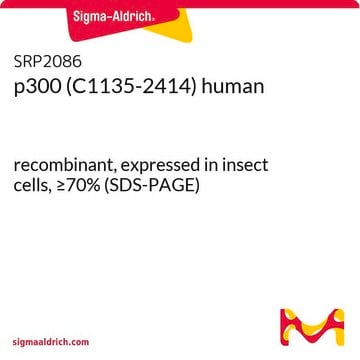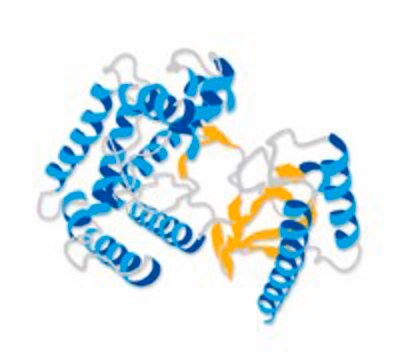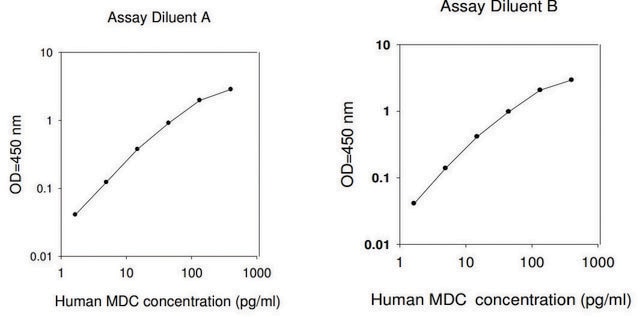14-418
p300, HAT Domain
Recombinant GST-fusion protein corresponding to amino acids 1066-1707 of human p300.
Sign Into View Organizational & Contract Pricing
All Photos(1)
About This Item
UNSPSC Code:
12352202
eCl@ss:
32160405
NACRES:
NA.41
Recommended Products
biological source
human
Quality Level
recombinant
expressed in E. coli
mol wt
Mw 100 kDa
manufacturer/tradename
Upstate®
technique(s)
activity assay: suitable (histone acetyltransferase (HAT))
NCBI accession no.
UniProt accession no.
shipped in
dry ice
Gene Information
human ... EP300(2033)
General description
Product Source: Expressed in E. coli.
Application
Recombinant GST-fusion protein corresponding to amino acids 1066-1707 of human p300.
Quality
Routinely evaluated by HAT Assay.
Unit Definition
Specific Activity: 1 Unit is defined as the transfer of 1nmol of [3H]-acetate/minute to acid-extracted histones.
Storage and Stability
-20°C for up to 6 months from the date of receipt.
Other Notes
For Specific Activity data, refer to the Certificate of Analysis for individual lots of this enzyme
Legal Information
UPSTATE is a registered trademark of Merck KGaA, Darmstadt, Germany
Disclaimer
Unless otherwise stated in our catalog or other company documentation accompanying the product(s), our products are intended for research use only and are not to be used for any other purpose, which includes but is not limited to, unauthorized commercial uses, in vitro diagnostic uses, ex vivo or in vivo therapeutic uses or any type of consumption or application to humans or animals.
Storage Class Code
10 - Combustible liquids
WGK
WGK 1
Certificates of Analysis (COA)
Search for Certificates of Analysis (COA) by entering the products Lot/Batch Number. Lot and Batch Numbers can be found on a product’s label following the words ‘Lot’ or ‘Batch’.
Already Own This Product?
Find documentation for the products that you have recently purchased in the Document Library.
The acetylation of transcription factor HBP1 by p300/CBP enhances p16INK4A expression.
Weibin Wang,Kewu Pan,Yifan Chen,Chunyin Huang,Xiaowei Zhang
Nucleic Acids Research null
A Giordano et al.
Journal of cellular physiology, 181(2), 218-230 (1999-09-25)
p300 and CBP are highly related nuclear proteins, which have been implicated in transcriptional responses to disparate extracellular and intracellular signals. There are at least two very good reasons for which p300 and CBP have attracted the attention of the
R L Schiltz et al.
The Journal of biological chemistry, 274(3), 1189-1192 (1999-01-09)
A number of transcriptional coactivators possess intrinsic histone acetylase activity, providing a direct link between hyperacetylated chromatin and transcriptional activation. We have determined the core histone residues acetylated in vitro by recombinant p300 and PCAF within mononucleosomes. p300 specifically acetylates
Dennis Shin-Shian Hsu et al.
Cancer cell, 26(4), 534-548 (2014-10-15)
Snail is primarily known as a transcriptional repressor that induces epithelial-mesenchymal transition by suppressing adherent proteins. Emerging evidence suggests that Snail can act as an activator; however, the mechanism and biological significance are unclear. Here, we found that CREB-binding protein
Junhui Xue et al.
Cancer letters, 471, 12-26 (2019-12-08)
Alpha-fetoprotein (AFP) is a well-established biomarker for hepatocellular carcinoma (HCC). Here, we investigated the acetylation state of AFP in vivo. AFP acetylation was regulated by the acetyltransferase CBP and the deacetylase SIRT1. Acetylation of AFP at lysines 194, 211, and
Our team of scientists has experience in all areas of research including Life Science, Material Science, Chemical Synthesis, Chromatography, Analytical and many others.
Contact Technical Service








